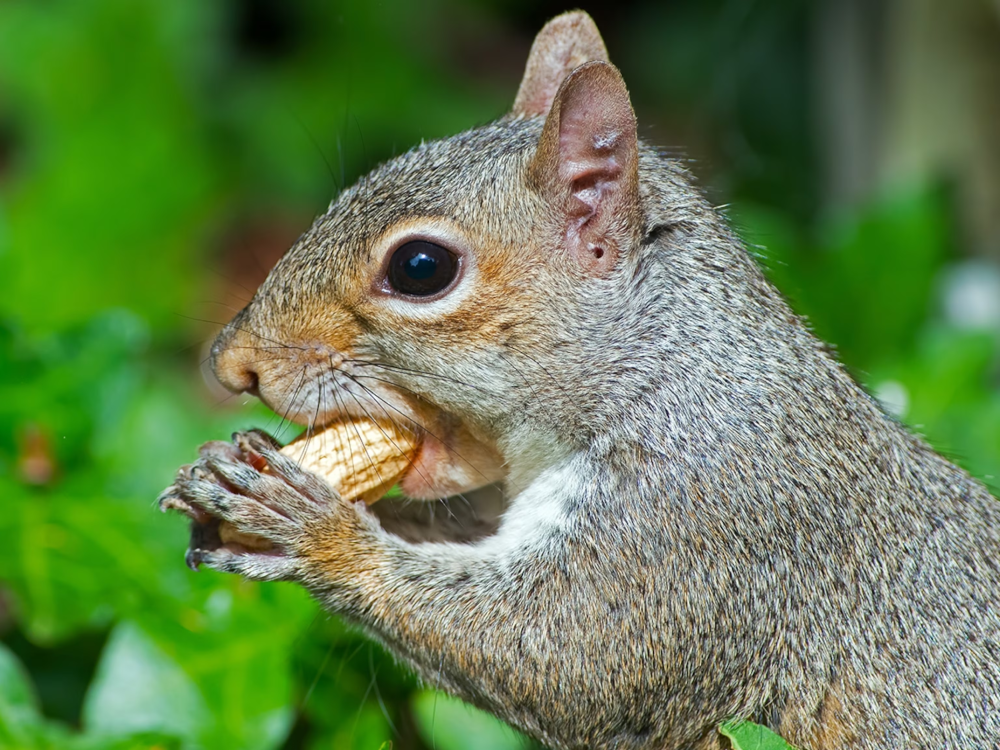Taxonomy and Physical Description
The gray squirrel, scientifically known as Sciurus carolinensis, belongs to the family Sciuridae. This family encompasses a wide variety of squirrels, including tree squirrels, ground squirrels, chipmunks, marmots, flying squirrels, and prairie dogs. The gray squirrel is one of the most common species of tree squirrels in North America.
Physically, gray squirrels have a predominantly gray fur coat with white underbellies. They typically measure between 9 to 12 inches in body length, with tails adding an additional 7 to 10 inches. Adult gray squirrels weigh between 14 to 21 ounces. Their bushy tails are not only a distinguishing feature but also serve several purposes, including balance, warmth, and communication.

Distribution and Habitat
Gray squirrels are native to the eastern and midwestern United States and southern Canada. Over time, they have been introduced to various regions, including parts of western North America, the United Kingdom, and Ireland. Their adaptability has allowed them to thrive in diverse habitats ranging from dense forests to urban areas.
In forested environments, gray squirrels prefer hardwood or mixed forests with dense tree canopies. Oak, hickory, beech, and maple trees are particularly favored due to their abundant food sources. In urban and suburban areas, gray squirrels have adapted to live in parks, gardens, and even attics.
Diet and Foraging Behavior
Gray squirrels are omnivores with a diet that primarily consists of tree bark, tree buds, berries, many types of seeds and acorns, walnuts, and other nuts, fungi, and some types of insects. They are known for their habit of caching food, burying nuts and seeds in various locations to consume during winter when food is scarce. This behavior not only ensures their survival through harsh seasons but also plays a crucial role in forest regeneration, as forgotten caches can sprout into new trees.
Behavior and Social Structure
Gray squirrels are diurnal, being most active during the early and late parts of the day. They exhibit both solitary and social behaviors. While foraging and caching food are typically solitary activities, gray squirrels may share communal nests, especially in colder climates, to conserve warmth.
Communication among gray squirrels involves a combination of vocalizations and tail movements. They emit a variety of sounds, including warning calls, mating calls, and distress signals. Tail flicking and other tail movements are used to convey messages to other squirrels.
Reproduction and Lifespan
The reproductive cycle of gray squirrels involves two breeding seasons per year, typically from December to February and again from May to June. Female squirrels give birth to litters of 2 to 8 young after a gestation period of about 44 days. The young are born blind and hairless and are dependent on their mother for several weeks.
Gray squirrels reach sexual maturity at about one year of age. In the wild, their lifespan averages between 6 to 12 years, though many do not survive their first year due to predation, disease, and accidents. In captivity, gray squirrels can live up to 20 years.
Ecological Impact and Human Interaction
Gray squirrels play a vital role in their ecosystems. Their foraging and caching habits aid in seed dispersal, which helps maintain forest health and biodiversity. Additionally, they serve as prey for various predators, including hawks, owls, foxes, and snakes.
In human environments, gray squirrels can sometimes be seen as pests, particularly when they raid bird feeders, gnaw on wooden structures, or invade attics. However, they also provide opportunities for wildlife observation and photography and contribute to the overall urban biodiversity.
Conservation Status
The gray squirrel is not currently considered endangered or threatened. In fact, their population is robust, and in some areas, they are so abundant that they are viewed as an invasive species. For example, in the United Kingdom, the introduction of the gray squirrel has led to the decline of the native red squirrel (Sciurus vulgaris) due to competition for resources and the spread of squirrel pox virus, to which gray squirrels are immune but red squirrels are not.
Conclusion
The gray squirrel is a fascinating and resilient creature that has successfully adapted to a wide range of environments. While their interactions with humans can sometimes be problematic, they remain an important part of the ecological fabric. Understanding the gray squirrel’s behavior, habitat, and impact helps us appreciate the complex dynamics of wildlife in both natural and urban settings. As we continue to study and coexist with these agile rodents, we gain insights into the intricate balance of our ecosystems and the creatures that inhabit them.









